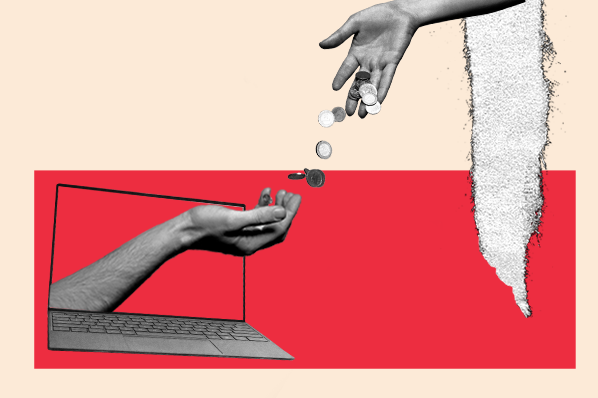"If you could wave a magic wand and change anything about your business, within reason, what would you change?"

One of my advisors asked me that recently. My answer was easy: "I'd reduce customer churn."
He wasn't surprised. He said that he gets the same response 90% of the time he asks that question.
Though my company's retention numbers are exceptionally strong, I know that even small reductions in churn would lead to:
- Increased revenue
- Higher referrals
- Increased upsell revenue
- Higher LTV and thus more customer acquisition channels
As former Brian Balfour, former VP of Growth at HubSpot says, "Retention is the core of your growth model and influences every other input to your model."
Of course, reducing customer churn isn't as easy as waving a magic wand. A big part of reducing churn simply involves innovating and improving on your product -- this is the rising tides approach, and should slowly but surely reduce churn -- albeit over the course of several years.
There are also specific areas of churn you can address. Most customers don't just wake up one day and decide to cancel -- they cancel for a reason. Some reasons are out of your control while some are addressable.
Here are five common, addressable reasons for churn and how your company can take action on them.
5 Reasons for Customer Churn You Need to Address
1. Lack of (or Zero) Engagement
According to Metasaas -- a company that "identifies unused, underused or abandoned SaaS licenses" -- approximately 31% of SaaS licenses go unused.
Anyone who has run a company knows how cumbersome it becomes to manage all your software licenses. Is it possible that all this recurring revenue you're earning is coming in partly because someone simply forgot to cancel? It's possible.
Or perhaps, your product is being used, but not nearly as frequently as it should be. Or your customers aren't using the full feature set. Or you haven't educated your customers enough so they are missing out on some key features.
All of these are forms of low engagement, which is almost always a strong leading indicator of churn.
To identify if you have this problem, you first need to track engagement. For most products, this means in-app analytics, while other more ‘behind the scenes' products might require doing customer surveys. Net Promoter Score® is a good place to start.
If you have the sample size and analytics resources, you may be able to correlate engagement numbers with churn. Then, you can come up with a "danger zone" line, basically when engagement -- however you measure it -- falls below a certain point. Here's how the folks at Intercom visualize it:
If you can't come up with this correlation due to lack of sample size or resources, simply come up with an educated guess (say bottom quartile of engagement) and run with it, knowing you can change it later.
Once you come up with your danger zone metric, you should set up monitoring so that your customer success team is immediately notified when a customer approaches that line. A customer success team member should proactively reach out and try and understand why a customer is not engaging, and fix the root problem.
2. Poor Product-Market Fit
We've all been sold a product that we didn't really want or need. As the one being sold to, it doesn't feel good, yet companies do it to others all the time.
Companies either pretend like it never happened or rationalize it by saying "it's revenue we wouldn't have earned otherwise."
It's important that your marketing and sales teams are attracting prospects and closing opportunities which can actually benefit from your product. If you are closing customers that won't be successful on your platform, usually via high-pressure sales tactics, you will damage your company's brand.
Additionally, it still takes time and money to close and support a bad-fit client. That money and time is better spent towards bringing in a client that you can help.
To fix this problem, there must be consistent communication between customer success, sales, and marketing teams. When patterns start to emerge that customers are being sold on the wrong product offering, it's important that the leadership of each team diagnoses the issue. These conversations can get heated if not done tactfully, so be sure to be as objective as possible and get to the root of the problem, and not attack people in other teams personally.
Often the result is altering your company's standards for qualifying a lead, ensuring that the lead has the needs that you can solve. Or perhaps, you might discover that slight tweaks to onboarding or product can make this segment of customers successful. Either way, it's important that you come to a consensus on not selling to customers who you can't make successful.
3. Product Bugginess
In the software world, bugs happen. It's a fact of life.
However, when another company or consumers depend on your product, you only get so many chances when it comes to bugs. Of course, the tolerance varies with the nature of the product, the severity of the bugs and the frequency of which bugs they occur. But one thing that really matters is how quickly bugs get resolved.
Customer success teams can help resolve bugs quickly, but only if the proper communication channels between customer success and engineering/product management are established.
Here at LawnStarter, we integrated our helpdesk platform with JIRA (which our engineering team uses) so that customer success reps can directly report bugs to engineering. We do our best to encourage discovery of bugs by anyone, and publicly recognize those who file the most bug reports.
LawnStarter's Chief Technology Officer Jonas Weigert says, "After we implemented this system, we saw bug reports increase right away. And that's a good thing. It means that we're speeding up the reporting time of issues, and when multiple reps report the same bug, it helps us prioritize."
The communication should be both ways. "We set up the system so that engineers can talk directly to the rep who reported the bug, which not only helps with diagnosis, but helps us provide estimated resolution times and potential workarounds," according to Weigert. That way, the customer success team can proactively communicate issues to customers, leading to a much better customer experience.
4. Difficult User Experience
Sure, your product may have the core functionality and provide a positive ROI. But is it easy and pleasurable to use?
Sure, some enterprise software platforms might be able to get away with crappy user experience design. But with software becoming more end-user oriented, and end-users all having higher and higher expectations of the web, usability is a must-have in many cases.
There are plenty of companies getting displaced by products with superior usability. Just look at Microsoft scrambling to make their messaging platform as polished as Slack.
A poor user experience grates on end-users over time. Those end-users complain to their bosses, who in turn complain to their bosses until the decision maker is sick of hearing it and switches to a new platform.
As stated in the previous section on software bugs, your customer success and product teams must be in synch. However, the process of fixing usability issues requires in-person meetings. On a regular basis -- probably sometime between monthly and quarterly -- both leaders and individual contributors from product and customer success teams should meet and review top ticket categories related to usability.
The customer success team should come prepared with real examples of how this impacted customers, along with how often tickets are created as a result of the issue. This way, the customer success team can demonstrate the magnitude of how usability issues are affecting the overall experience.
5. Lack of Proactive Support
We've previously established that customer success is far more than customer support. One of the key differences is that customer success requires being proactive, rather than reactive.
Recently my company was up for renewal with a vendor which we had had numerous issues with. I liked their product in theory, but it was often buggy, had hurt our business multiple times, and their support was always lackadaisical so I eventually chalked it up as a loss and just planned to not renew.
Of course when it came time for renewal and I explained why we didn't want to renew, they started blowing up my inbox, trying to help. It felt so disingenuous. Had they expressed that sort of proactive care for us as a client earlier, we might still be happy customers.
Now, not only will we not renew, but will tell all of our friends not to use their service.
The lesson? Make sure your customer success team is proactive about addressing -- and solving -- problems.
The customer success team at Unamo, a company that provides SEO and social media monitoring tools, knows firsthand the benefit of being proactive. They do customer interviews every three months to ensure their customers are getting value from their product.
The customer success team asks questions including the following:
- Who is using Unamo at your company's team? Do the goals and usage depend on the person?
- What SEO problems do you solve with our product on a regular basis?
- What features do we currently lack or underperform on?
Udamo's customer success manager Nika Wojciechowska calls these questions "instrumental in helping reduce churn."
Make sure you hold your customer success team accountable to proactive check-ins. You may uncover some dissatisfaction that wasn't bad enough for the customer to cause a stink, but over time leads to churn.
Reducing churn is incredibly important to any organization; even companies with the stickiest products of all time have teams dedicated to churn reduction. It's important that you are not only reducing churn by improving your product, but also identifying discrete reasons for churn and addressing them. Certainly this list is not comprehensive, but hopefully, you've learned common reasons for churn and how to set up the systems and processes to fix these sources of churn.
How have you reduced churn at your company? Let me know on Twitter.
Net Promoter, Net Promoter System, Net Promoter Score, NPS and the NPS-related emoticons are registered trademarks of Bain & Company, Inc., Fred Reichheld and Satmetrix Systems, Inc.






![Big Brands That Lost Customers' Satisfaction in 2023 [Where CX Went Wrong + Data]](https://blog.hubspot.com/hubfs/companies%20that%20lost%20customers_featured.png)



![How to Calculate Churn Rate in 5 Easy Steps [Definition + Formula]](https://blog.hubspot.com/hubfs/calculate-churn-rate.jpeg)
